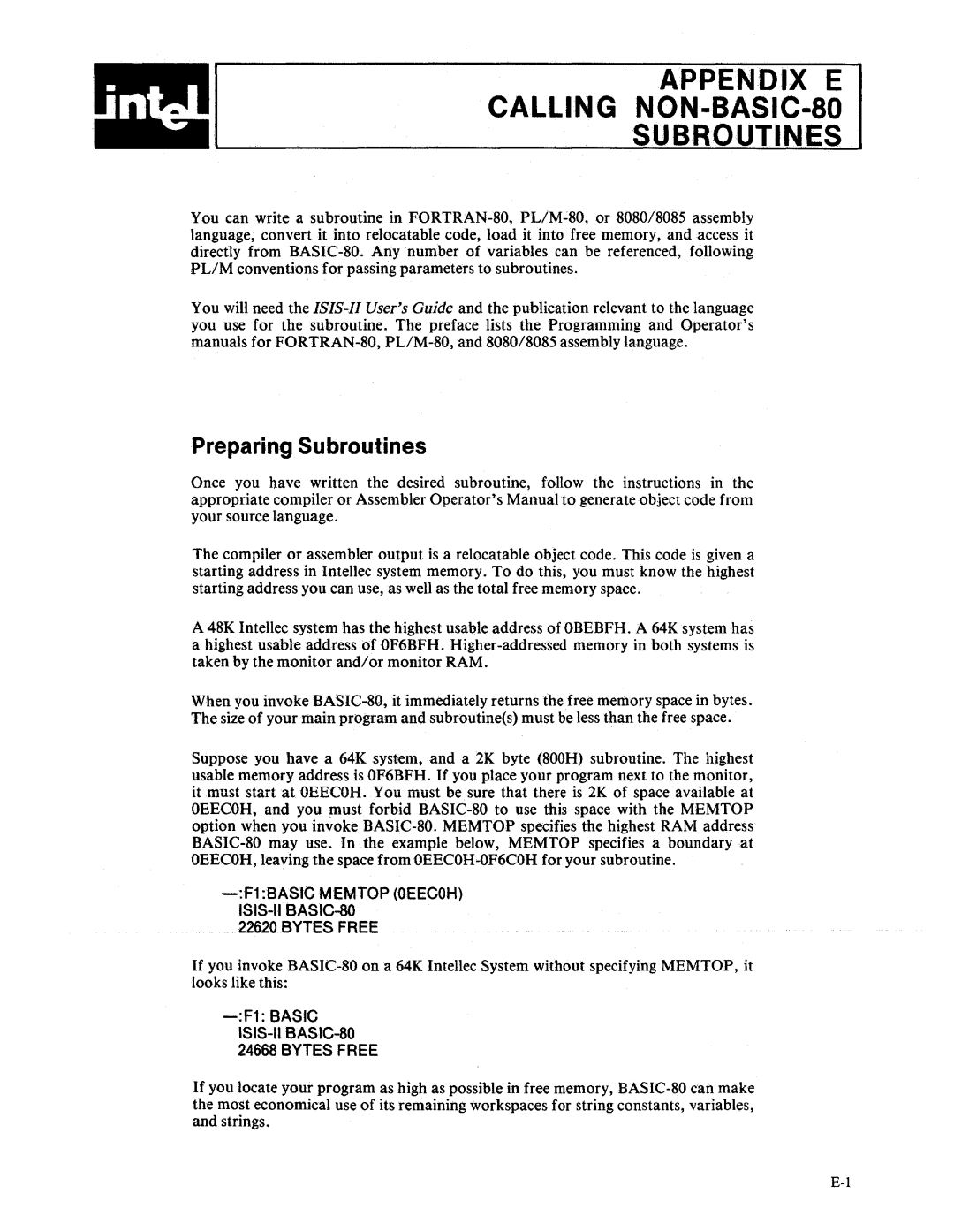APPENDIXE
CALLING NON-BAStC-SO
SUBROUTINES
You can write a subroutine in FORTRAN-SO, PL/M':SO, or SOSO/SOS5 assembly language, convert it into relocatable code, load it into free memory, and access it directly from BASIC-SO. Any number of variables can be referenced, following PL/M conventions for passing parameters to subroutines.
You will need the ISIS-II User's Guide and the publication relevant to the language you use for the subroutine. The preface lists the Programming and Operator's manuals for FORTRAN-SO, PL/M-SO, and SOSO/SOS5 assembly language.
Preparing Subroutines
Once you have written the desired subroutine, follow the instructions in the appropriate compiler or Assembler Operator's Manual to generate object code from your source language.
The compiler or assembler output is a relocatable object code. This code is given a starting address in Intellec system memory. To do this, you must know the highest starting address you can use, as well as the total free memory space.
A 4SK Intellec system has the highest usable address of OBEBFH. A 64K system has a highest usable address of OF6BFH. Higher-addressed memory in both systems is taken by the monitor and/or monitor RAM.
When you invoke BASIC-SO, it immediately returns the free memory space in bytes. The size of your main program and subroutine(s) must be less than the free space.
Suppose you have a 64K system,and a 2K byte (SOOH) subroutine. The highest usable memory address is OF6BFH. If you place your program next to the monitor, it must start at OEECOH. You must besure that there is 2K of space available at OEECOH, and you ~ust forbid BASIC-SO to use this space with the MEMTOP option when you invoke BASIC-SO. MEMTOP specifies the highest RAlVI address BASIC-SO may use. In the example below, MEMTOP specifies a boundary at OEECOH, leaving the space fromOEECOH-OF6COH for your subroutine.
-:F1 :BASIC MEMTOP (OEECOH) ISIS-II BASIC-80
22620 BYTES FREE
If you invoke BASIC-SO on a 64K Intellec System without specifying MEMTOP, it looks like this:
-:F1: BASIC ISIS-II BASIC-80 24668 BYTES FREE
If you locate your program as high as possible in free memory, BASIC-SO can make the most economical use of its remaining workspaces for string constants, variables, and strings.

